Test your home network performance
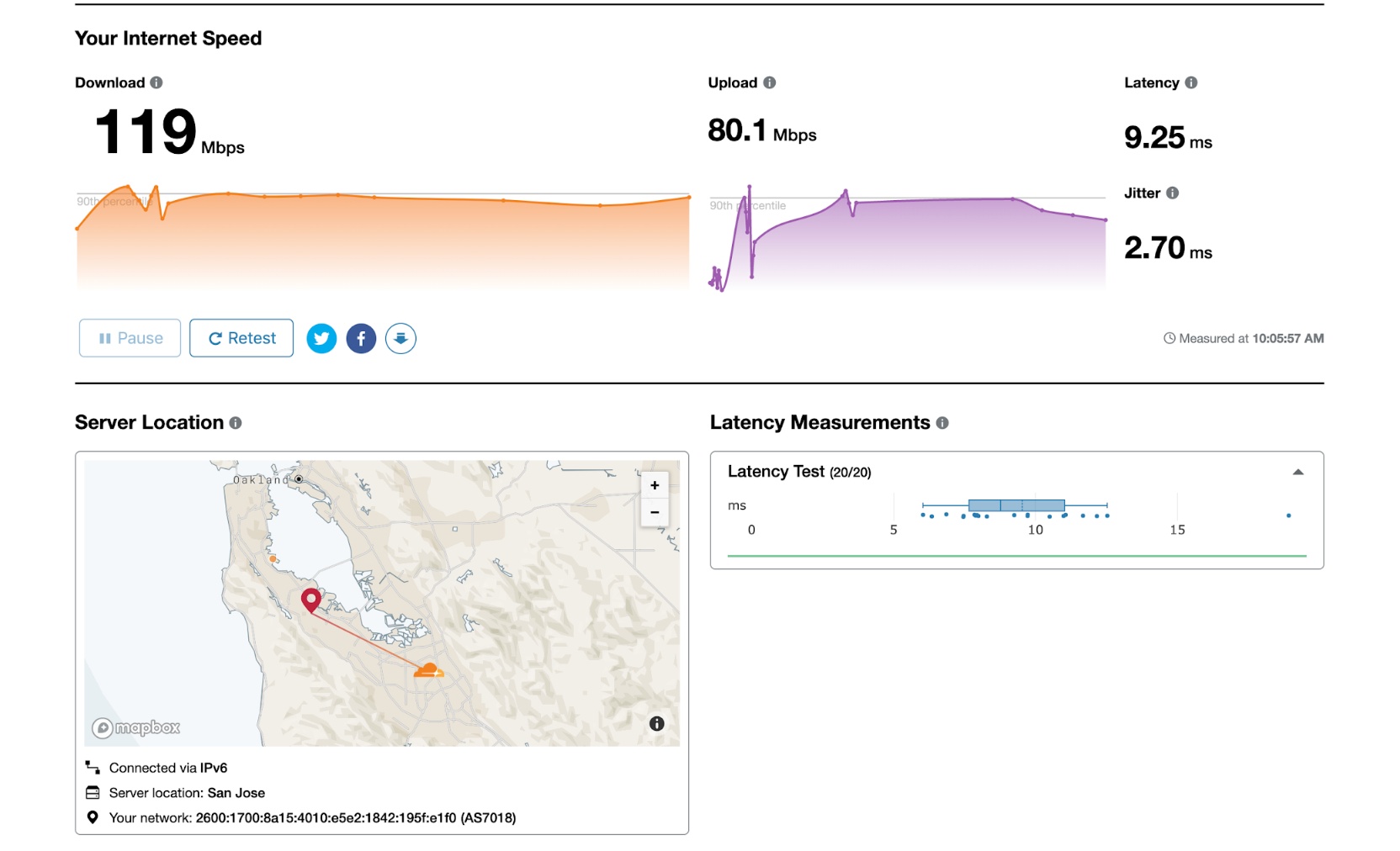
With many people being forced to work from home, there’s increased load on consumer ISPs. You may be asking yourself: how well is my ISP performing with even more traffic? Today we’re announcing the general availability of speed.cloudflare.com, a way to gain meaningful insights into exactly how well your network is performing.
We’ve seen a massive shift from users accessing the Internet from busy office districts to spread out urban areas.
Although there are a slew of speed testing tools out there, none of them give you precise insights into how they came to those measurements and how they map to real-world performance. With speed.cloudflare.com, we give you insights into what we’re measuring and how exactly we calculate the scores for your network connection. Best of all, you can easily download the measurements from right inside the tool if you’d like to perform your own analysis.
We also know you care about privacy. We believe that you should know what happens with the results generated by this tool. Many other tools sell the data to third parties. Cloudflare does not sell your data. Performance data is collected and anonymized and is governed by the terms of Continue reading
Making DNS record changes more reliable
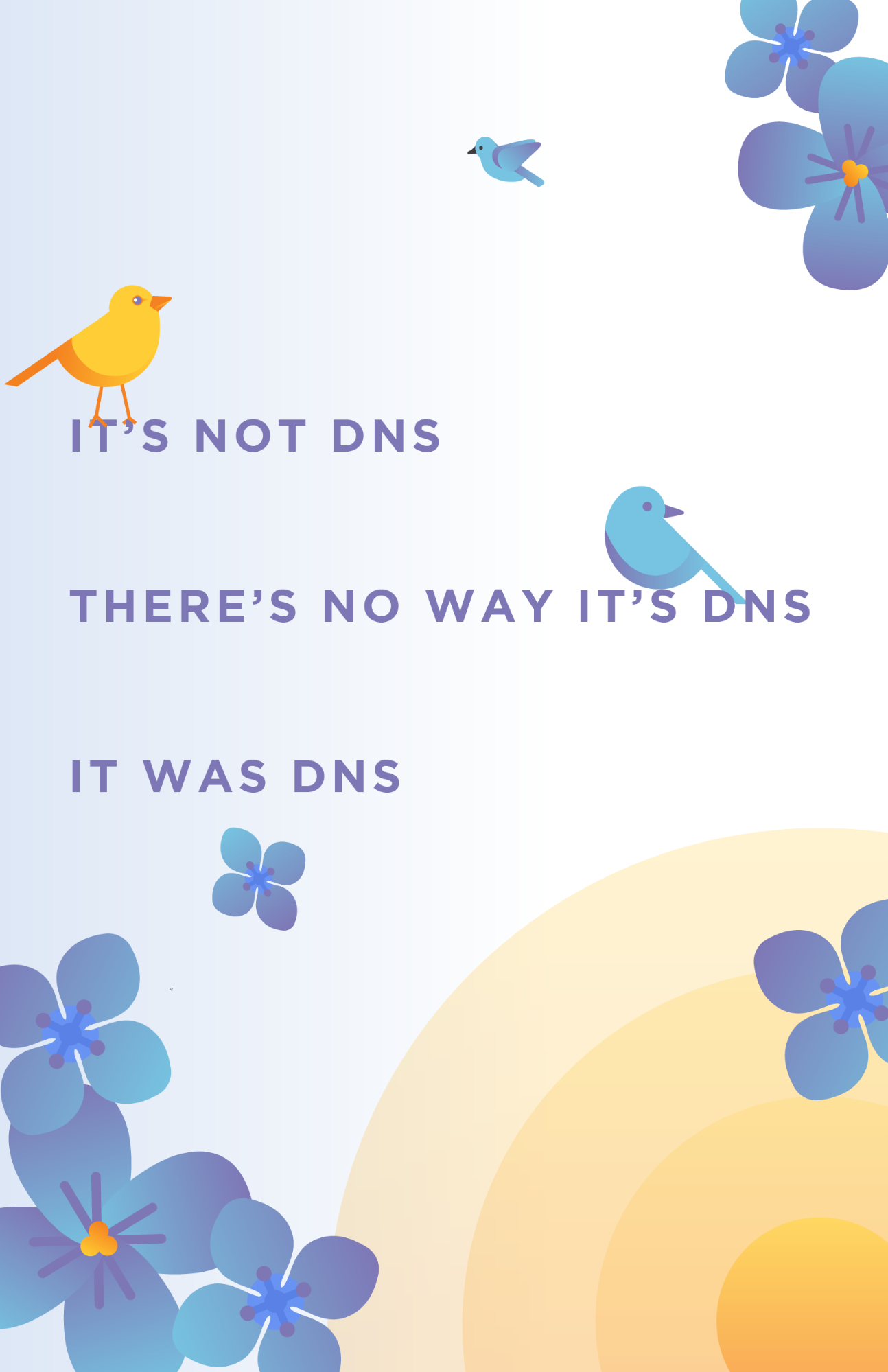
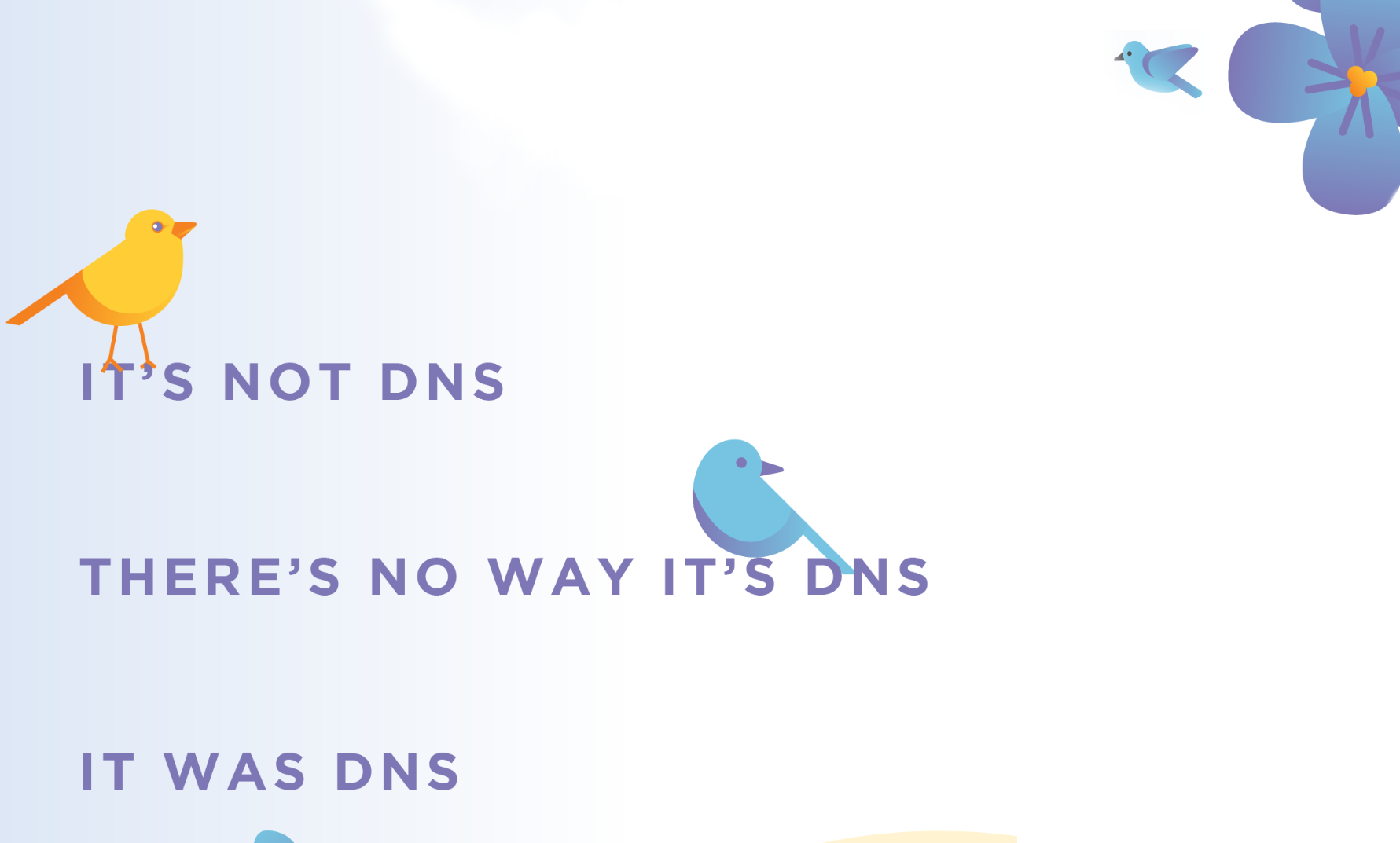
DNS is the very first step in accessing any website, API, or pretty much anything on the Internet, which makes it mission-critical to keeping your site up and running. This week, we are launching two significant changes that allow our customers to better maintain and update their DNS records. For customers who use Cloudflare as their authoritative DNS provider, we’ve added a much asked for feature: confirmation to DNS record edits. For our secondary DNS customers, we’re excited to provide a brand new onboarding experience.
Confirm and Commit
One of the benefits of using Cloudflare DNS is that changes quickly propagate to our 200+ data centers. And I mean very quickly: DNS propagation typically takes <5 seconds worldwide. Our UI was set up to allow customers to edit records, click out of the input box, and boom! The record has propagated!

There are a lot of advantages to fast DNS, but there's also one clear downside – it leaves room for fat fingering. What if you accidentally toggle the proxy icon, or mistype the content of your DNS record? This could result in users not being able to access your website or API and could cause a significant outage. To Continue reading
Secondary DNS — A faster, more resilient way to serve your DNS records
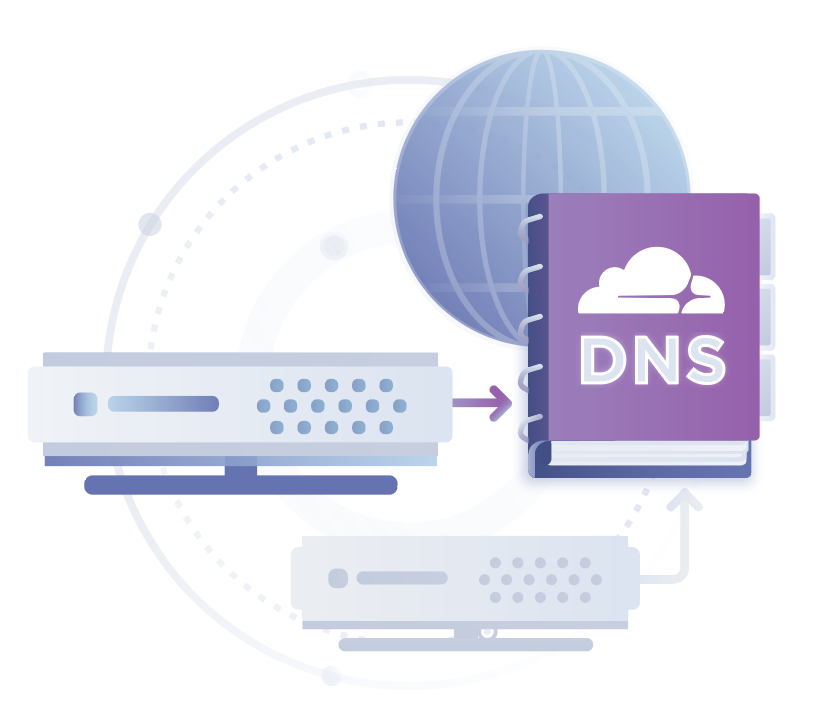
What is secondary DNS, and why is it important?
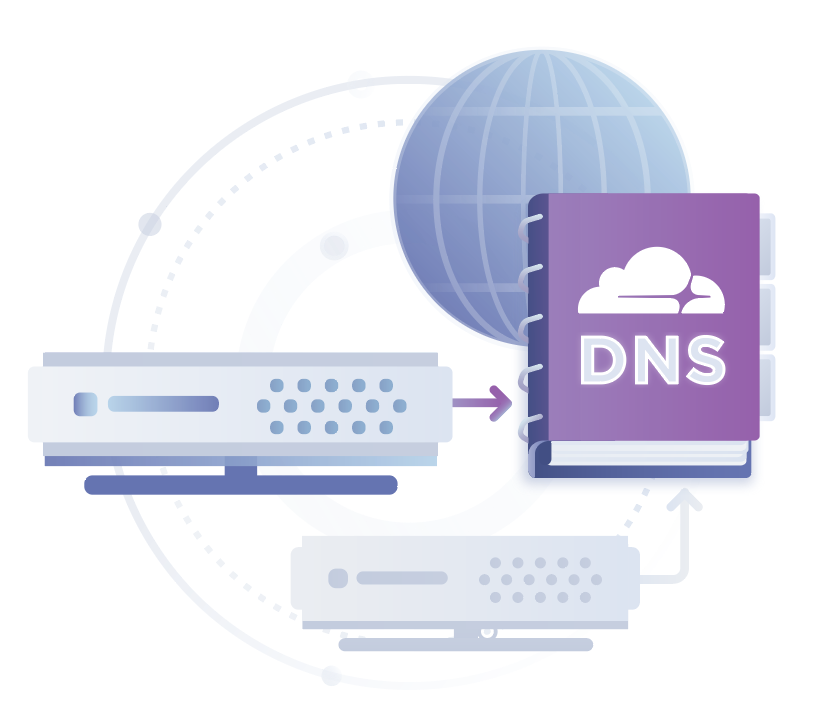
In DNS, nameservers are responsible for serving DNS records for a zone. How the DNS records populate into the nameservers differs based on the type of nameserver.
A primary master is a nameserver that manages a zone’s DNS records. This is where the zone file is maintained and where DNS records are added, removed, and modified. However, relying on one DNS server can be risky. What if that server goes down, or your DNS provider has an outage? If you run a storefront, then your customers would have to wait until your DNS server is back up to access your site. If your website were a brick and mortar store, this would be effectively like boarding up the door while customers are trying to get in.This type of outage can be very costly.
Now imagine you have another DNS server that has a replica of your DNS records. Wouldn’t it be great to have it as a back-up if your primary nameserver went down? Or better yet, what if both served your DNS records at all times— this could help decrease the latency of DNS requests, distribute the load between Continue reading
Releasing Cloudflare Access’ most requested feature

Cloudflare Access, part of Cloudflare for Teams, replaces legacy corporate VPNs with Cloudflare’s global network. Instead of starting a VPN client to backhaul traffic through an office, users visit the hostname of an internal application and login with your team’s SSO provider. While the applications feel like SaaS apps for end users, your security and IT departments can configure granular controls and audit logging in a single place.
Since Access launched two years ago, customers have been able to integrate multiple SSO providers at the same time. This MultiSSO option makes it seamless for teams to have employees login with Okta or Azure AD while partners and contractors use LinkedIN or GitHub.
The integrations always applied globally. Users would see all SSO options when connecting to any application protected by Cloudflare Access. As more organizations use Cloudflare Access to connect distributed and mixed workforces to resources, listing every provider on every app no longer scales.
For example, your team might have an internal GitLab instance that only employees need to access using your corporate G Suite login. Meanwhile, the marketing department needs to share QA versions of new sites with an external agency who authenticates with LinkedIn. Asking both Continue reading
Resolve internal hostnames with Cloudflare for Teams
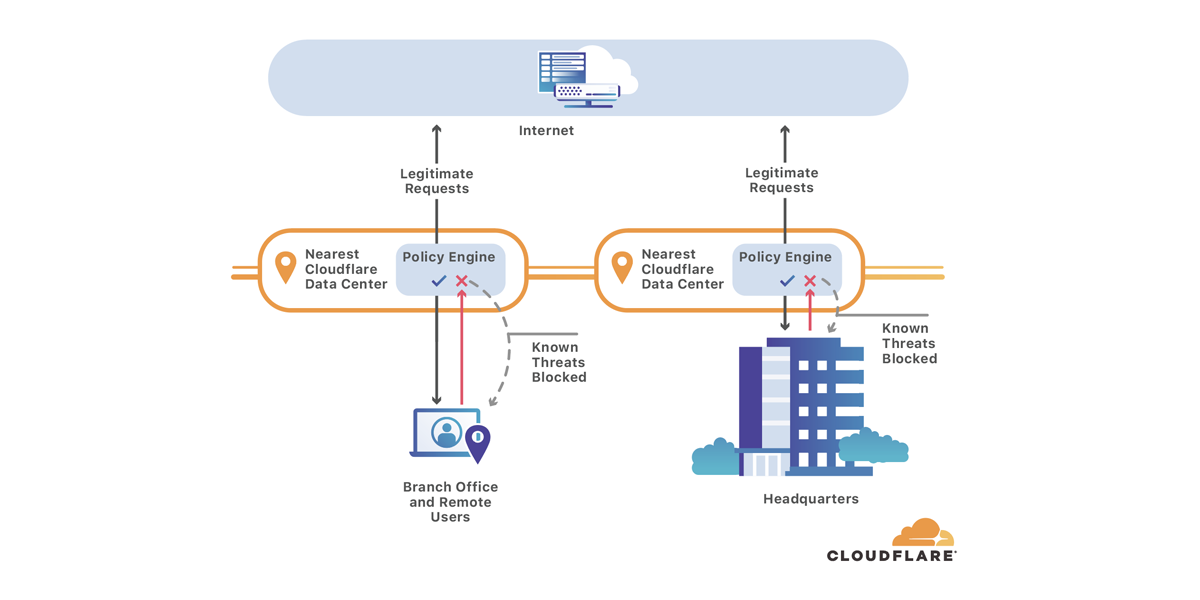
Phishing attacks begin like any other visit to a site on the Internet. A user opens a suspicious link from an email, and their DNS resolver looks up the hostname, then connects the user to the origin.
Cloudflare Gateway’s secure DNS blocks threats like this by checking every hostname query against a constantly-evolving list of known threats on the Internet. Instead of sending the user to the malicious host, Gateway stops the site from resolving. The user sees a “blocked domain” page instead of the malicious site itself.
As teams migrate to SaaS applications and zero-trust solutions, they rely more on the public Internet to do their jobs. Gateway's security works like a bouncer, keeping users safe as they navigate the Internet. However, some organizations still need to send traffic to internal destinations for testing or as a way to make the migration more seamless.
Starting today, you can use Cloudflare Gateway to direct end user traffic to a different IP than the one they originally requested. Administrators can build rules to override the address that would be returned by a resolver and send traffic to a specified alternative.
Like the security features of Cloudflare Gateway, the redirect function is Continue reading
DeepLinks and ScrollAnchor
What are DeepLinks?
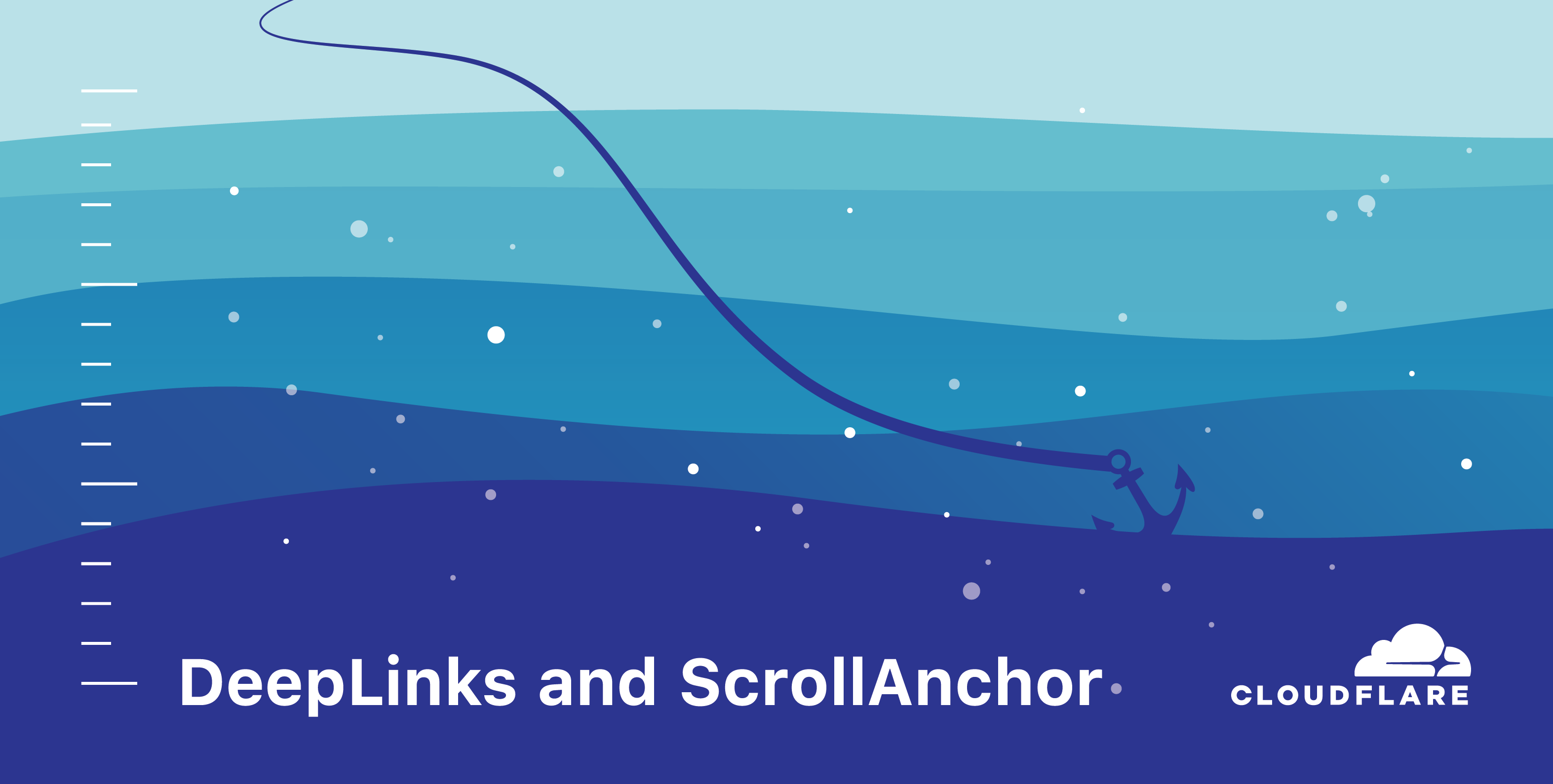
To directly quote Wikipedia:
“Deep linking is the use of a hyperlink that links to a specific, generally searchable or indexed, piece of web content on a website (e.g. http://example.com/path/page), rather than the website's home page (e.g., http://example.com). The URL contains all the information needed to point to a particular item.”
Why DeepLinks in Dashboard?
There are many user experiences in Cloudflare’s Dashboard that are enhanced by the use of deep linking, such as:
- We’re able to direct users from marketing pages directly into the Dashboard so they can interact with new/changed features.
- Troubleshooting docs can have clearer, more intently directions. e.g. “Enable SSL encryption here” vs “Log into the Dashboard, choose your account and zone, navigate to the security tab, change SSL encryption level, blah blah blah”.
One of the interesting challenges with deep linking in the Dashboard is that most interesting resources are “locked” behind the context of an account and a zone/domain/website. To illustrate this, look at a tree of possible URL paths into Cloudflare’s Dashboard:
dash.cloudflare.com/ -> root-level resources: login, sign-up, forgot-password, two-factor
dash.cloudflare.com/<accountId>/ -> account-level resources: analytics, workers, Continue readingNetwork-Layer DDoS Attack Trends for Q1 2020
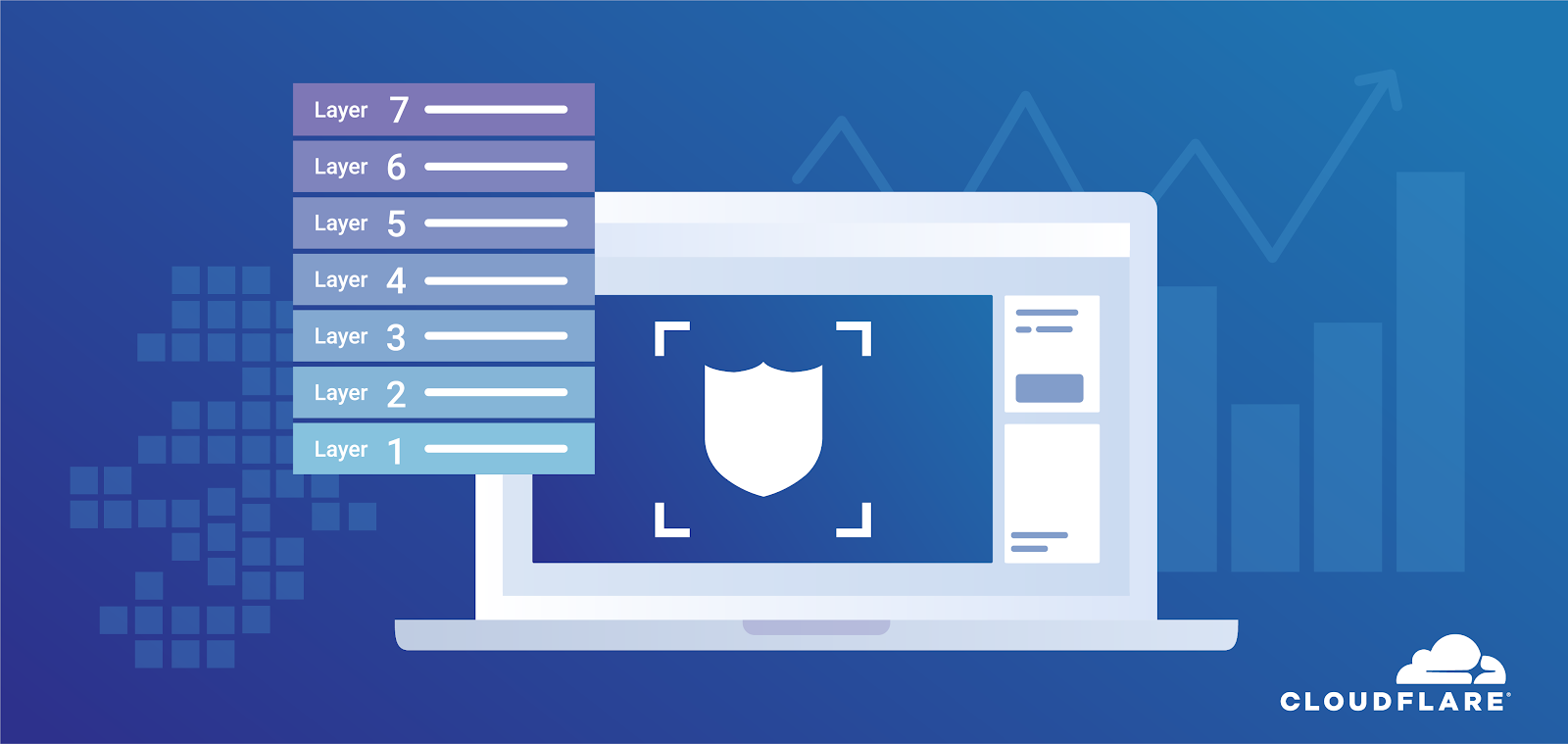

As we wrapped up the first quarter of 2020, we set out to understand if and how DDoS attack trends have shifted during this unprecedented time of global shelter in place. Since then, traffic levels have increased by over 50% in many countries, but have DDoS attacks increased as well?
Traffic increases are often observed during holiday seasons. During holidays, people may spend more time online; whether shopping, ordering food, playing online games or a myriad of other online activities. This higher usage translates into higher revenue per minute for the companies that provide those various online services.
Downtime or service degradation during these peak times could result in user churn and loss of significant revenue in a very short time. ITIC estimates that the average cost of an outage is $5,600 per minute, which extrapolates to well over $300K per hour. It is therefore no surprise that attackers capitalize on the opportunity by launching a higher number of DDoS attacks during the holiday seasons.
The current pandemic has a similar cause and effect. People are forced to stay home. They have become more reliant on online services to accomplish their daily tasks which has generated a surge in the Continue reading
Backblaze B2 and the S3 Compatible API on Cloudflare
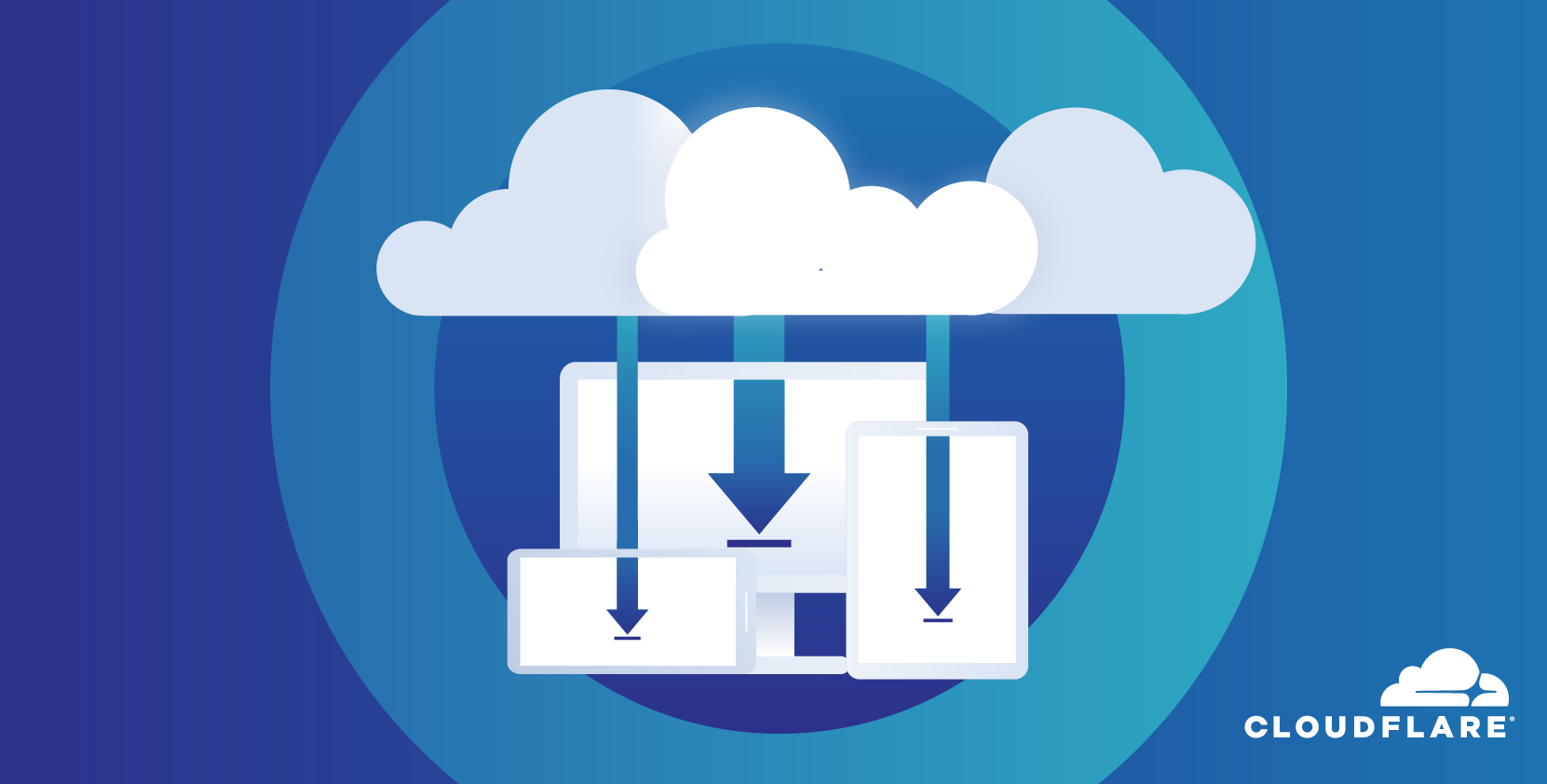
In May 2020, Backblaze, a founding Bandwidth Alliance partner announced S3 compatible APIs for their B2 Cloud Storage service. As a refresher, the Bandwidth Alliance is a group of forward-thinking cloud and networking companies that are committed to discounting or waiving data transfer fees for shared customers. Backblaze has been a proud partner since 2018. We are excited to see Backblaze introduce a new level of compatibility in their Cloud Storage service.
History of the S3 API
First let’s dive into the history of the S3 API and why it’s important for Cloudflare users.
Prior to 2006, before the mass migration to the Cloud, if you wanted to store content for your company you needed to build your own expensive and highly available storage platform that was large enough to store all your existing content with enough growth headroom for your business. AWS launched to help eliminate this model by renting their physical computing and storage infrastructure.
Amazon Simple Storage Service (S3) led the market by offering a scalable and resilient tool for storing unlimited amounts of data without building it yourself. It could be integrated into any application but there was one catch: you couldn’t use any existing standard Continue reading
Making Video Intuitive: An Explainer
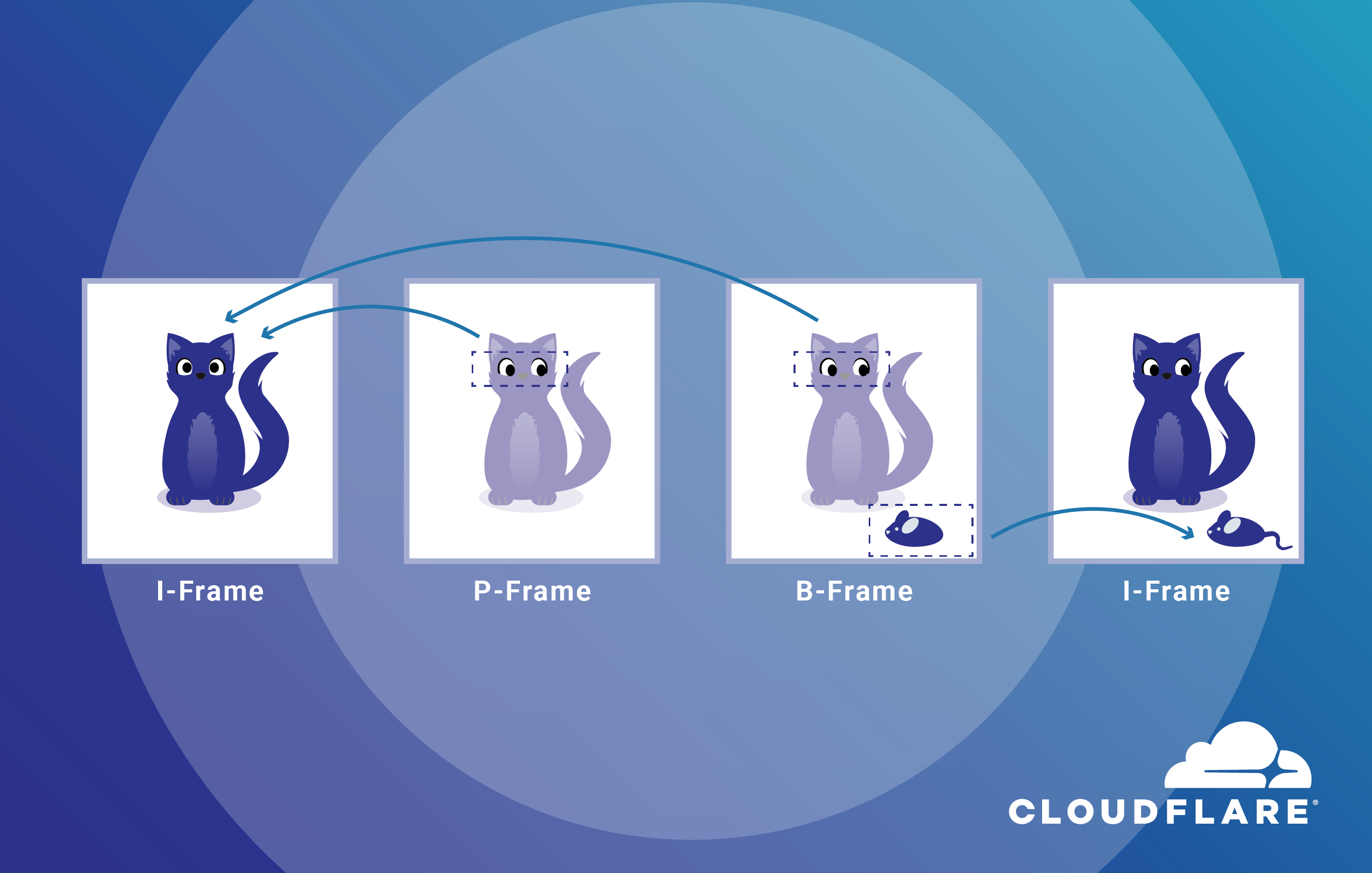
On the Stream team at Cloudflare, we work to provide a great viewing experience while keeping our service affordable. That involves a lot of small tweaks to our video pipeline that can be difficult to discern by most people. And that makes the results of those tweaks less intuitive.
In this post, let's have some fun. Instead of fine-grained optimization work, we’ll do the opposite. Today we’ll make it easy to see changes between different versions of a video: we’ll start with a high-quality video and ruin it. Instead of aiming for perfection, let’s see the impact of various video coding settings. We’ll go on a deep dive on how to make some victim video look gloriously bad and learn on the way.
Everyone agrees that video on the Internet should look good, start playing fast, and never rebuffer regardless of the device they’re on. People can prefer one version of a video over another and say it looks better. Most people, though, would have difficulty elaborating on what ‘better’ means. That’s not an issue when you’re just consuming video. However, when you’re storing, encoding, and distributing it, how that video looks determines how happy your viewers are.
To determine Continue reading
CUBIC and HyStart++ Support in quiche

quiche, Cloudflare's IETF QUIC implementation has been running CUBIC congestion control for a while in our production environment as mentioned in Comparing HTTP/3 vs. HTTP/2 Performance). Recently we also added HyStart++ to the congestion control module for further improvements.
In this post, we will talk about QUIC congestion control and loss recovery briefly and CUBIC and HyStart++ in the quiche congestion control module. We will also discuss lab test results and how to visualize those using qlog which was recently added to the quiche library as well.
QUIC Congestion Control and Loss Recovery
In the network transport area, congestion control is how to decide how much data the connection can send into the network. It has an important role in networking so as not to overrun the link but also at the same time it needs to play nice with other connections in the same network to ensure that the overall network, the Internet, doesn’t collapse. Basically congestion control is trying to detect the current capacity of the link and tune itself in real time and it’s one of the core algorithms for running the Internet.
QUIC congestion control has been written based on many years of TCP Continue reading
Cloudflare Bot Management: machine learning and more

Introduction

Building Cloudflare Bot Management platform is an exhilarating experience. It blends Distributed Systems, Web Development, Machine Learning, Security and Research (and every discipline in between) while fighting ever-adaptive and motivated adversaries at the same time.
This is the ongoing story of Bot Management at Cloudflare and also an introduction to a series of blog posts about the detection mechanisms powering it. I’ll start with several definitions from the Bot Management world, then introduce the product and technical requirements, leading to an overview of the platform we’ve built. Finally, I’ll share details about the detection mechanisms powering our platform.
Let’s start with Bot Management’s nomenclature.
Some Definitions
Bot - an autonomous program on a network that can interact with computer systems or users, imitating or replacing a human user's behavior, performing repetitive tasks much faster than human users could.
Good bots - bots which are useful to businesses they interact with, e.g. search engine bots like Googlebot, Bingbot or bots that operate on social media platforms like Facebook Bot.
Bad bots - bots which are designed to perform malicious actions, ultimately hurting businesses, e.g. credential stuffing bots, third-party scraping bots, spam bots and sneakerbots.

Bot Management - blocking Continue reading
Cinco de Mayo – What are we celebrating anyway?

Greetings from Latinflare, Cloudflare’s LatinX Employee Resource Group, with members all over the US, the UK, and Portugal. Today is Cinco de Mayo! Americans everywhere will be drinking margaritas and eating chips and salsa. But what is this Mexican holiday really about and what exactly are we celebrating?
About Cinco de Mayo
Cinco de Mayo, Spanish for "Fifth of May", is an annual celebration held in Mexico on May 5th. The date is observed to commemorate the Mexican Army's victory over the French Empire at the Battle of Puebla, on May 5, 1862, under the leadership of General Ignacio Zaragoza. The victory of the smaller Mexican force against a larger French force was a boost to morale for the Mexicans. Zaragoza died months after the battle due to illness. A year after the battle, a larger French force defeated the Mexican army at the Second Battle of Puebla, and Mexico City soon fell to the invaders.
In the United States, Cinco de Mayo has taken on a significance beyond that in Mexico. More popularly celebrated in the United States than Mexico, the date has become associated with the celebration of Continue reading
Setting up Cloudflare for Teams as a Start-Up Business
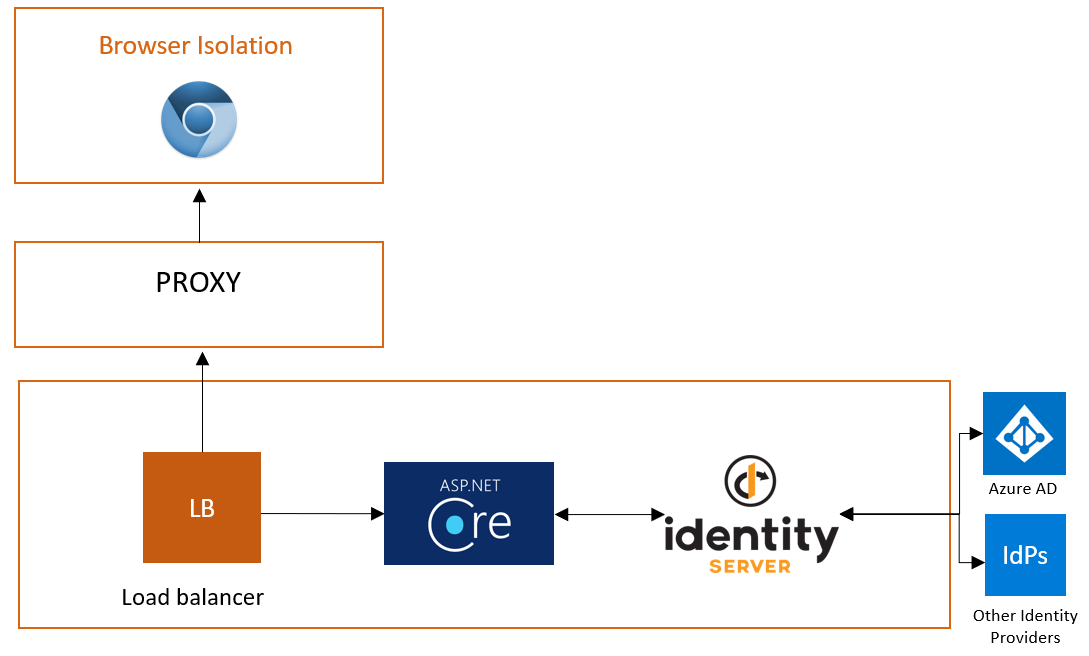
Earlier this year, Cloudflare acquired S2 Systems. We were a start-up in Kirkland, Washington and now we are home to Cloudflare’s Seattle-area office.
Our team developed a new approach to remote browser isolation (RBI), a technology that runs your web browser in a cloud data center, stopping threats on the Internet from executing any code on your machine. The closer we can bring that data center to the user, the faster we can make that experience. Since the acquisition, we have been focused on running our RBI platform in every one of Cloudflare’s data centers in 200 cities around the world.
The RBI solution will join a product suite that we call Cloudflare for Teams, which consists of two products: Access and Gateway.
Those two products solve a number of problems that companies have with securing users, devices, and data. As a start-up, we struggled with a few of these challenges in really painful ways:
- How do we let prospects securely trial our RBI platform?
- How do we keep our small office secure without an IT staff?
- How can we connect to the powerful, but physically clunky and heavy development machines, when we are not in that office?
Dogfooding Continue reading
A single dashboard for Cloudflare for Teams

Starting today, Cloudflare Access can now be used in the Cloudflare for Teams dashboard. You can manage security policies for your people and devices in the same place that you build zero-trust rules to protect your applications and resources. Everything is now in one place in a single dashboard.
We are excited to launch a new UI that can be used across the entire Teams platform, but we didn’t build this dashboard just for the sake of a new look-and-feel. While migrating the Access dashboard, we focused on solving one of the largest sources of user confusion in the product.
This post breaks down why the original UI caused some headaches, how we think about objects in Cloudflare for Teams, and how we set out to fix the way we display that to our users.
Cloudflare Access
Cloudflare Access is one-half of Cloudflare for Teams, a security platform that runs on Cloudflare’s network. Teams protects users, devices and data without compromising experience or performance. We built Cloudflare Access to solve our own headaches with private networks as we grew from a team concentrated in a single office to a globally distributed organization.
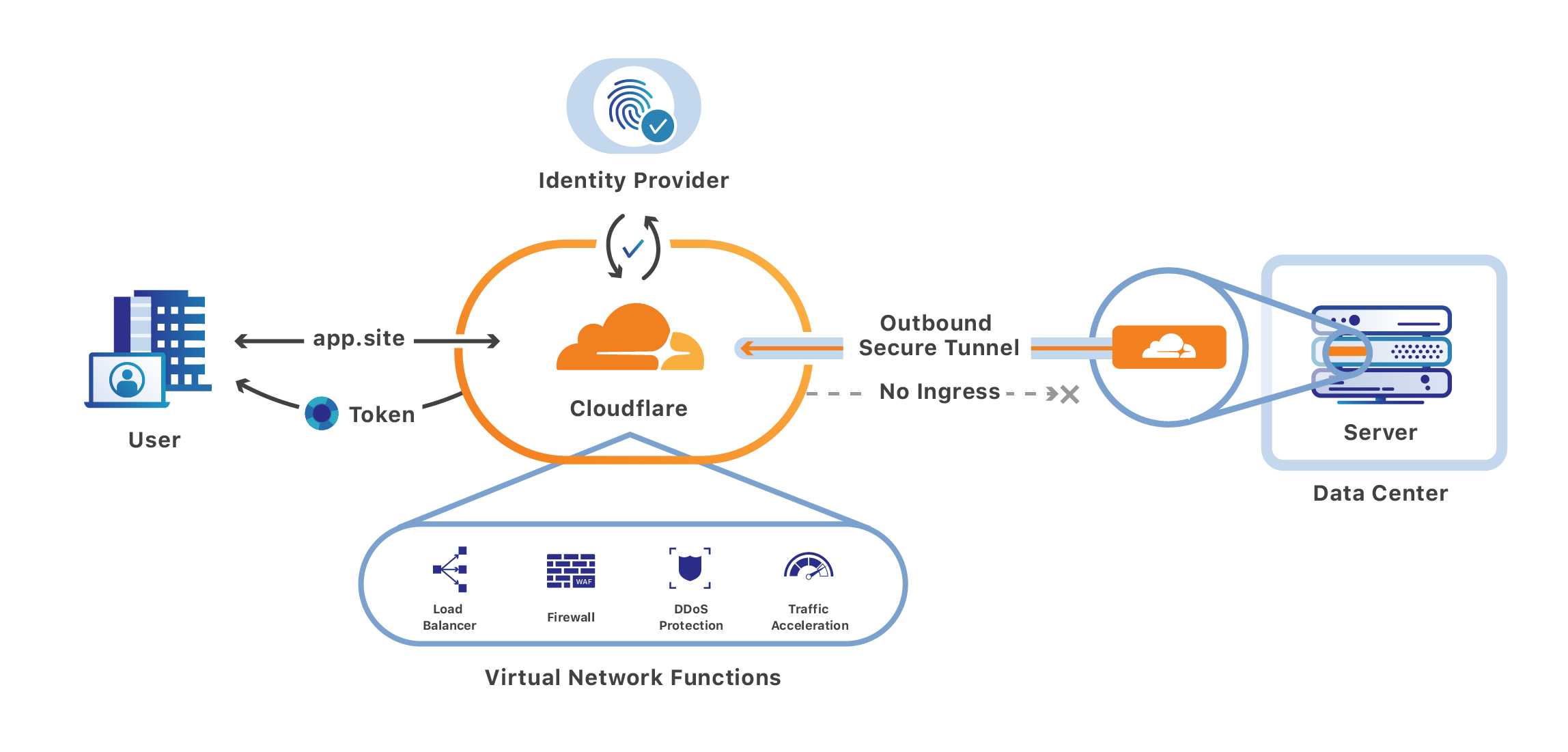
Cloudflare Access replaces corporate VPNs with Cloudflare’s Continue reading
When people pause the Internet goes quiet
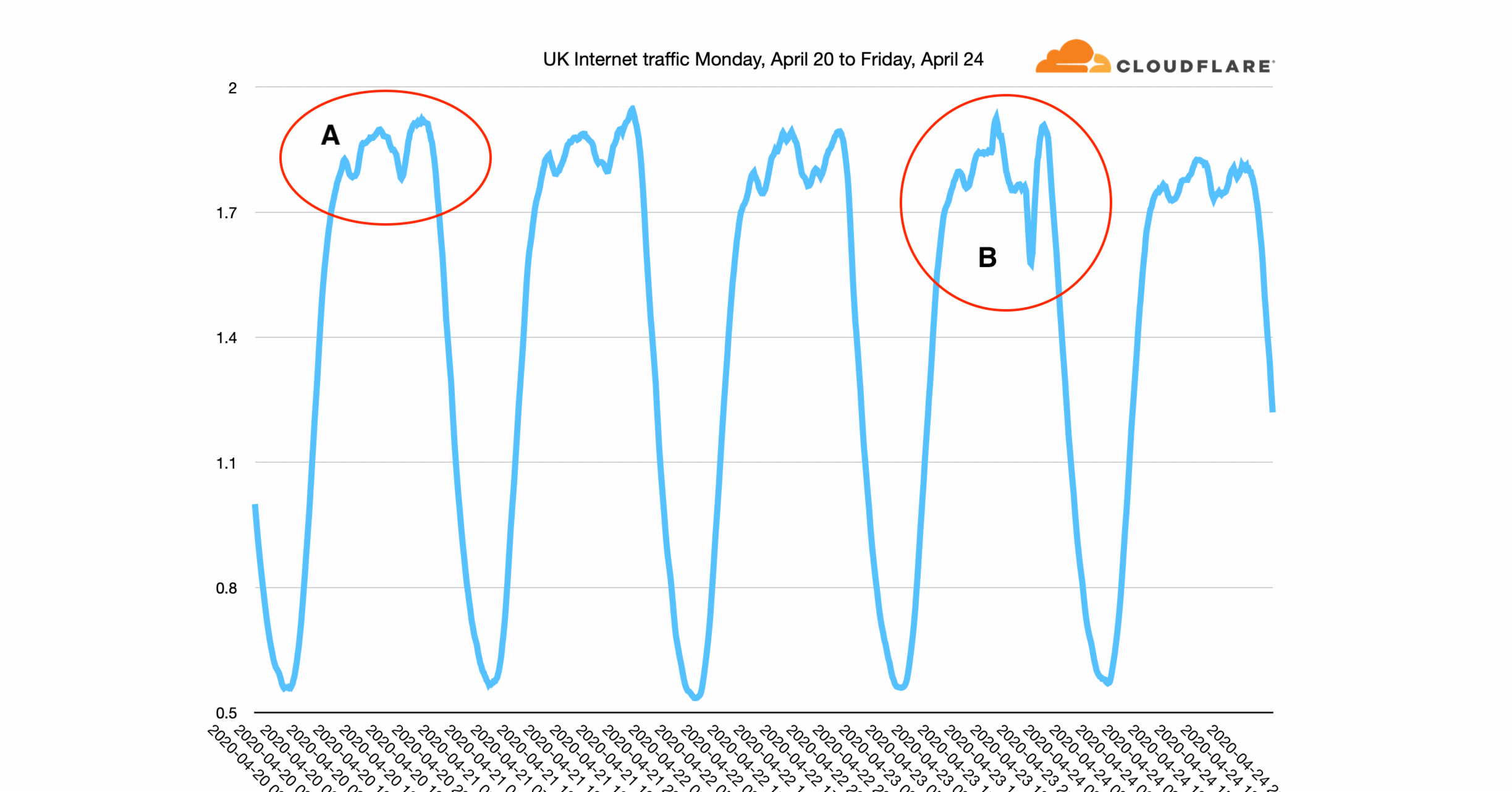
Recent news about the Internet has mostly been about the great increase in usage as those workers who can have been told to work from home. I've written about this twice recently, first in early March and then last week look at how Internet use has risen to a new normal.
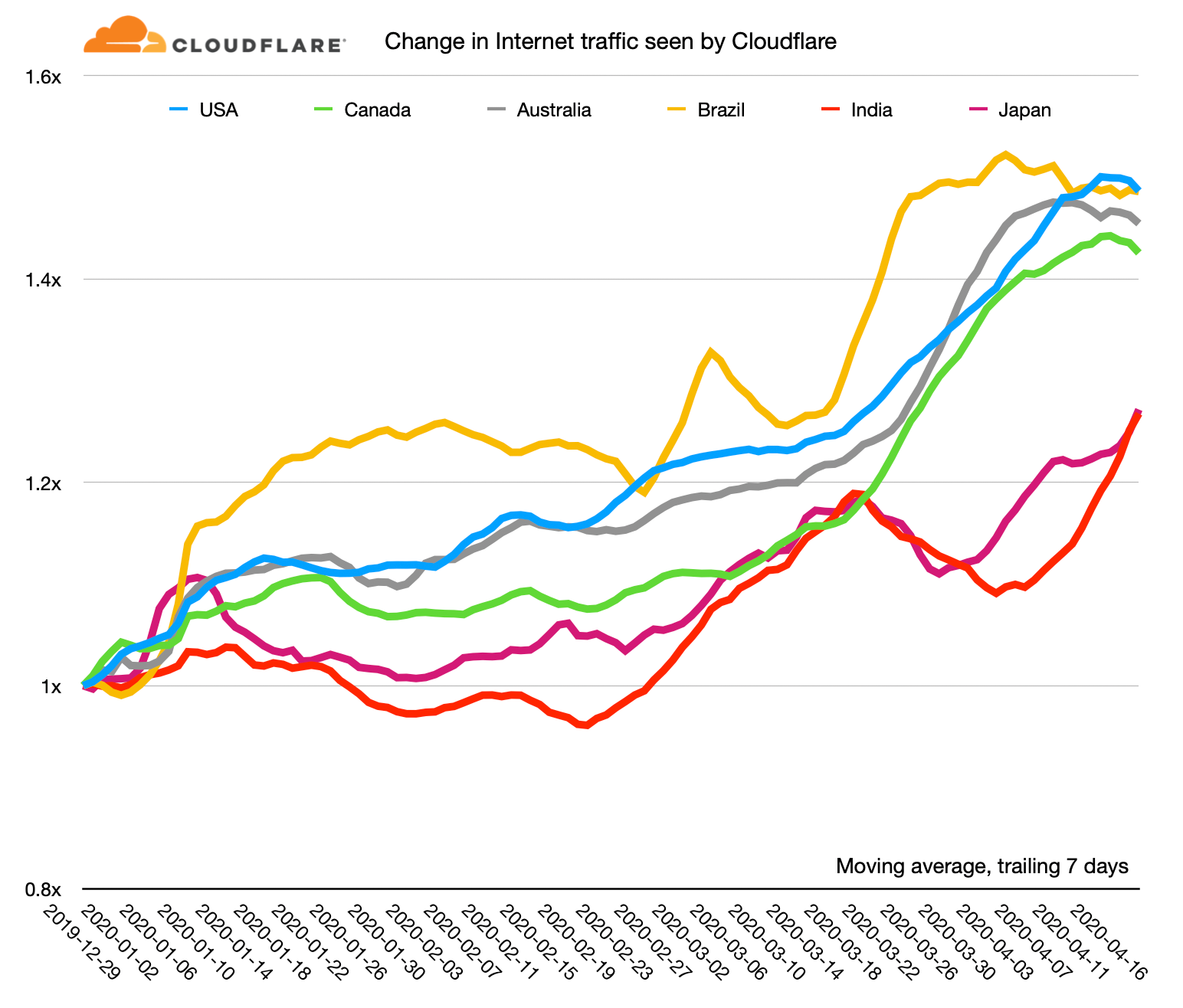
As human behaviour has changed in response to the pandemic, it's left a mark on the charts that network operators look at day in, day out to ensure that their networks are running correctly.
Most Internet traffic has a fairly simple rhythm to it. Here, for example, is daily traffic seen on the Amsterdam Internet Exchange. It's a pattern that's familiar to most network operators. People sleep at night, and there's a peak of usage in the early evening when people get home and perhaps stream a movie, or listen to music or use the web for things they couldn't do during the workday.
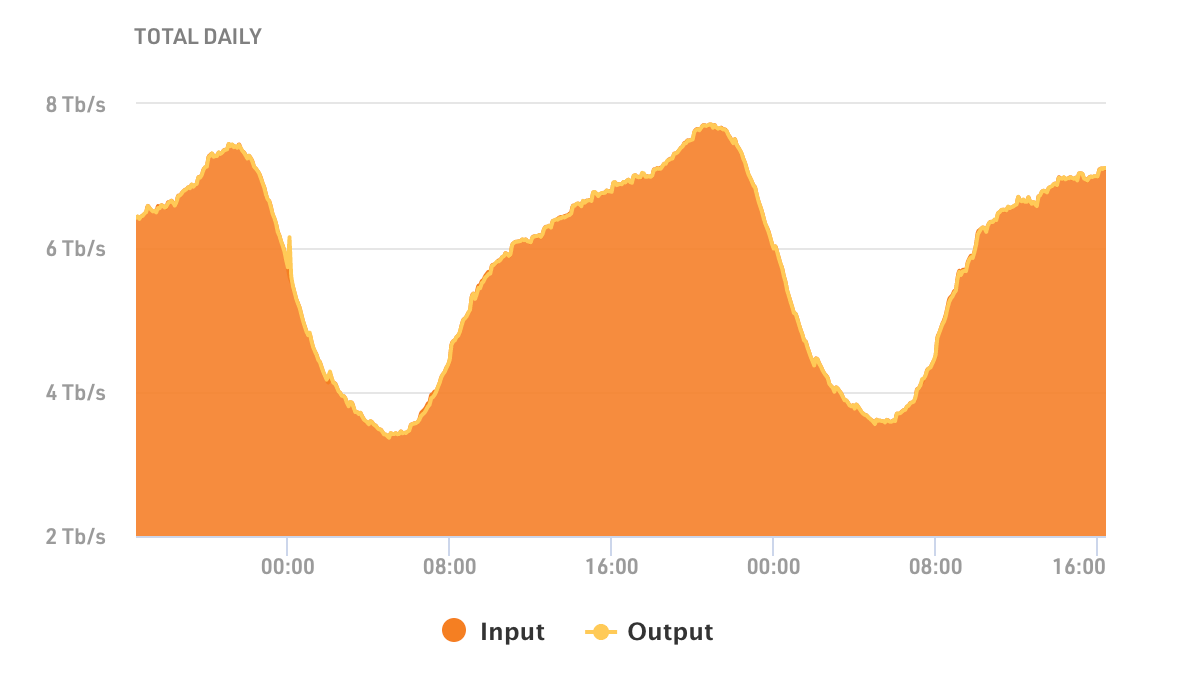
But sometimes that rhythm get broken. Recently we've seen the evening peak by joined by morning peaks as well. Here's a graph from the Milan Internet Exchange. There are three peaks: morning, afternoon and evening. These peaks seem to be caused by people working from Continue reading
DDoS attacks have evolved, and so should your DDoS protection
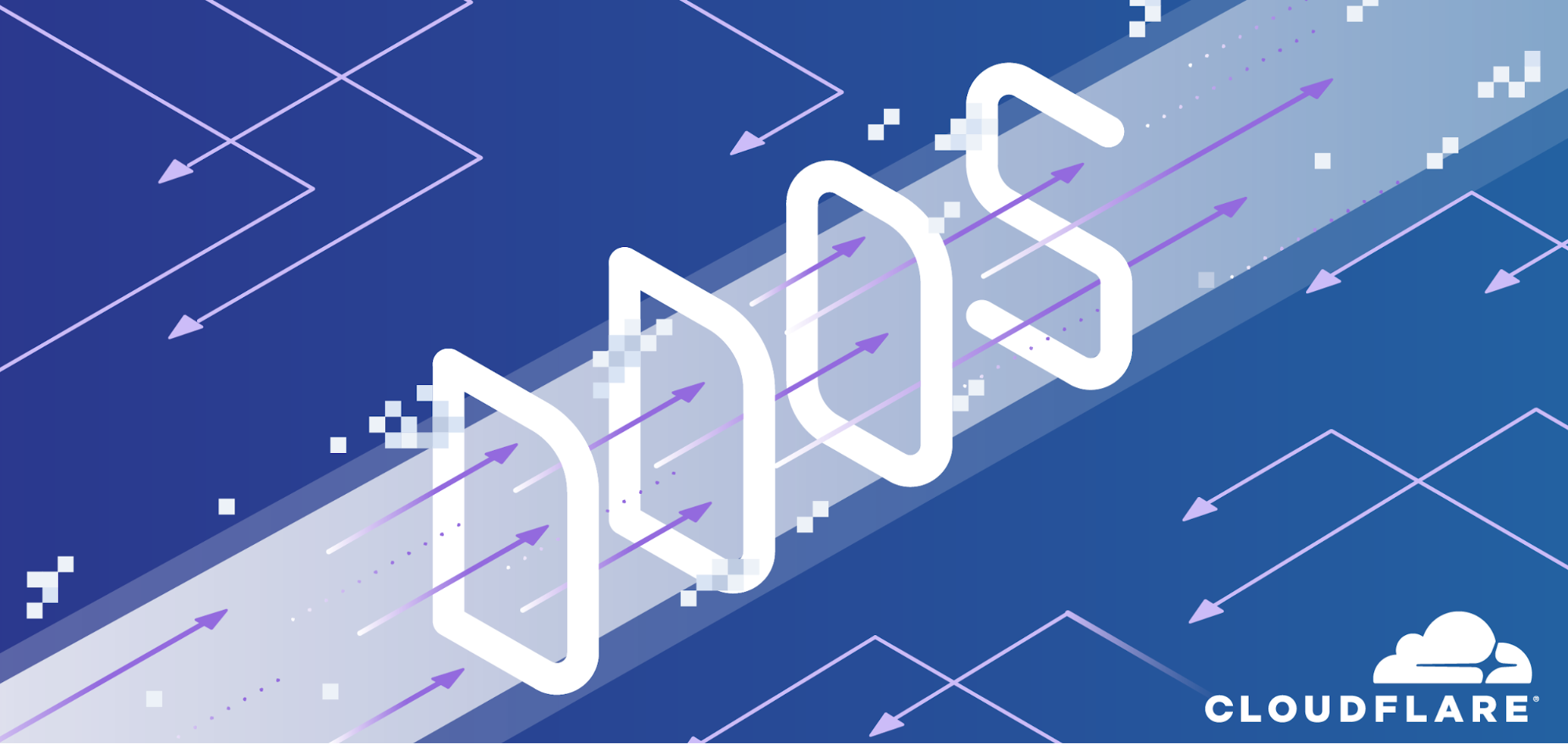
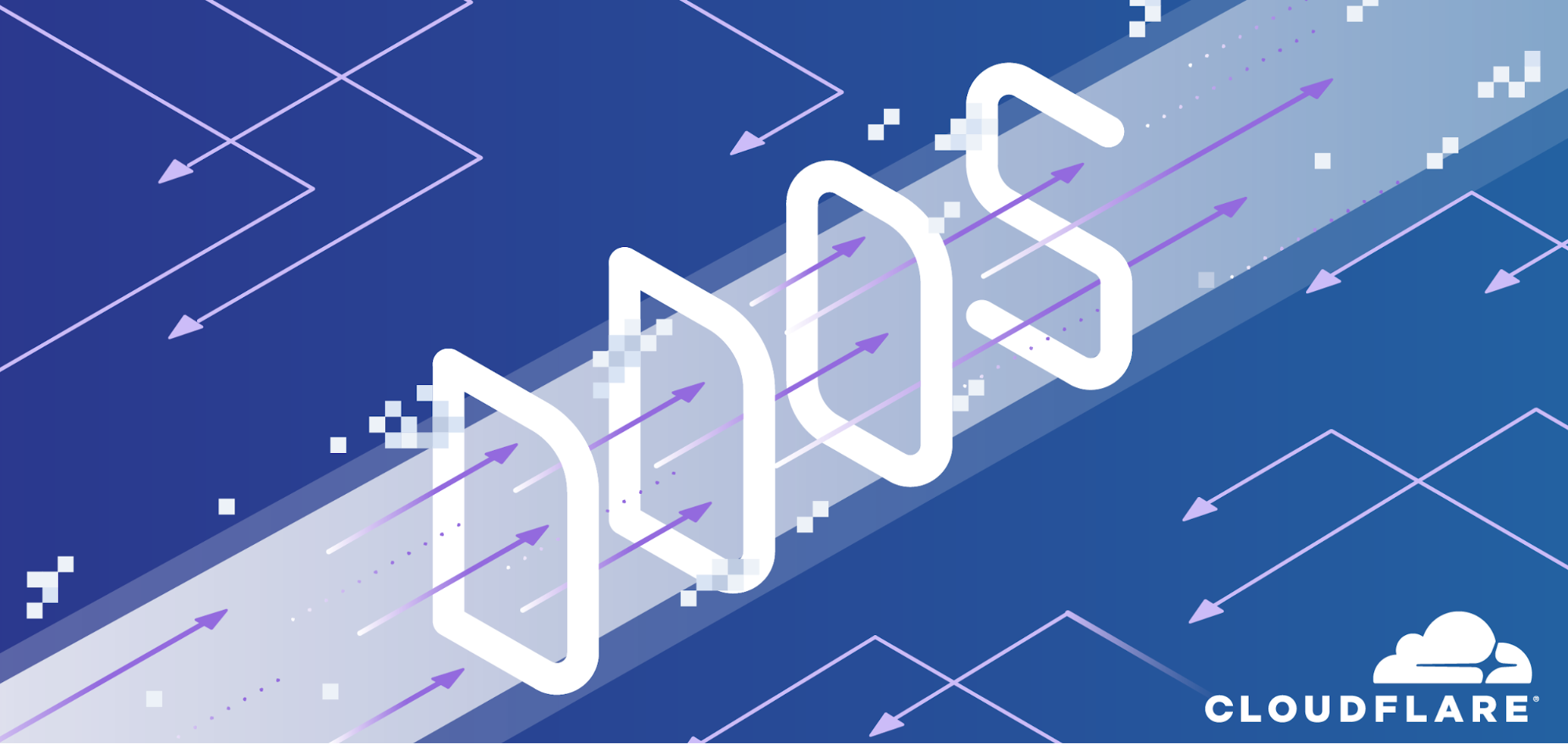
The proliferation of DDoS attacks of varying size, duration, and persistence has made DDoS protection a foundational part of every business and organization’s online presence. However, there are key considerations including network capacity, management capabilities, global distribution, alerting, reporting and support that security and risk management technical professionals need to evaluate when selecting a DDoS protection solution.
Gartner’s view of the DDoS solutions; How did Cloudflare fare?
Gartner recently published the report Solution Comparison for DDoS Cloud Scrubbing Centers (ID G00467346), authored by Thomas Lintemuth, Patrick Hevesi and Sushil Aryal. This report enables customers to view a side-by-side solution comparison of different DDoS cloud scrubbing centers measured against common assessment criteria. If you have a Gartner subscription, you can view the report here. Cloudflare has received the greatest number of ‘High’ ratings as compared to the 6 other DDoS vendors across 23 assessment criteria in the report.
The vast landscape of DDoS attacks
From our perspective, the nature of DDoS attacks has transformed, as the economics and ease of launching a DDoS attack has changed dramatically. With a rise in cost-effective capabilities of launching a DDoS attack, we have observed a rise in the number of under 10 Gbps DDoS Continue reading
Empowering our Customers and Service Partners

Last year, Cloudflare announced the planned expansion of our partner program to help managed and professional service partners efficiently engage with Cloudflare and join us in our mission to help build a better Internet. Today, we want to highlight some of those amazing partners and our growing support and training for MSPs around the globe. We want to make sure service partners have the enablement and resources they need to bring a more secure and performant Internet experience to their customers.
This partner program tier is specifically designed for professional service firms and Managed Service Providers (MSPs and MSSPs) that want to build value-added services and support Cloudflare customers. While Cloudflare is hyper-focused on building highly scalable and easy to use products, we recognize that some customers may want to engage with a professional services firm to assist them in maximizing the value of our offerings. From building Cloudflare Workers, implementing multi-cloud load balancing, or managing WAF and DDoS events, our partner training and support enables sales and technical teams to position and support the Cloudflare platform as well as enhance their services businesses.
Training
Our training and certification is meant to help partners through each stage of Cloudflare adoption, Continue reading
Doubling the intern class – and making it all virtual
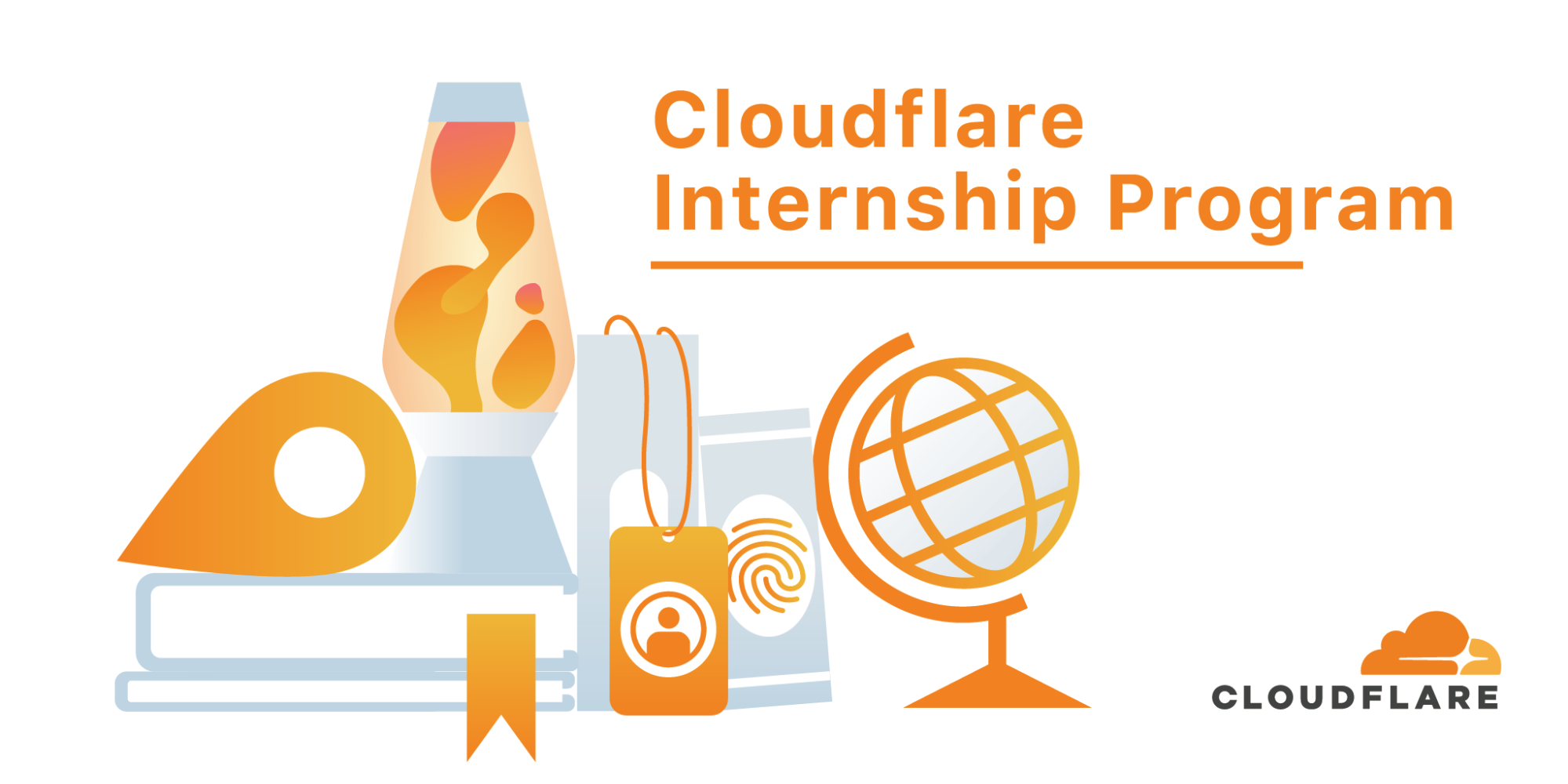
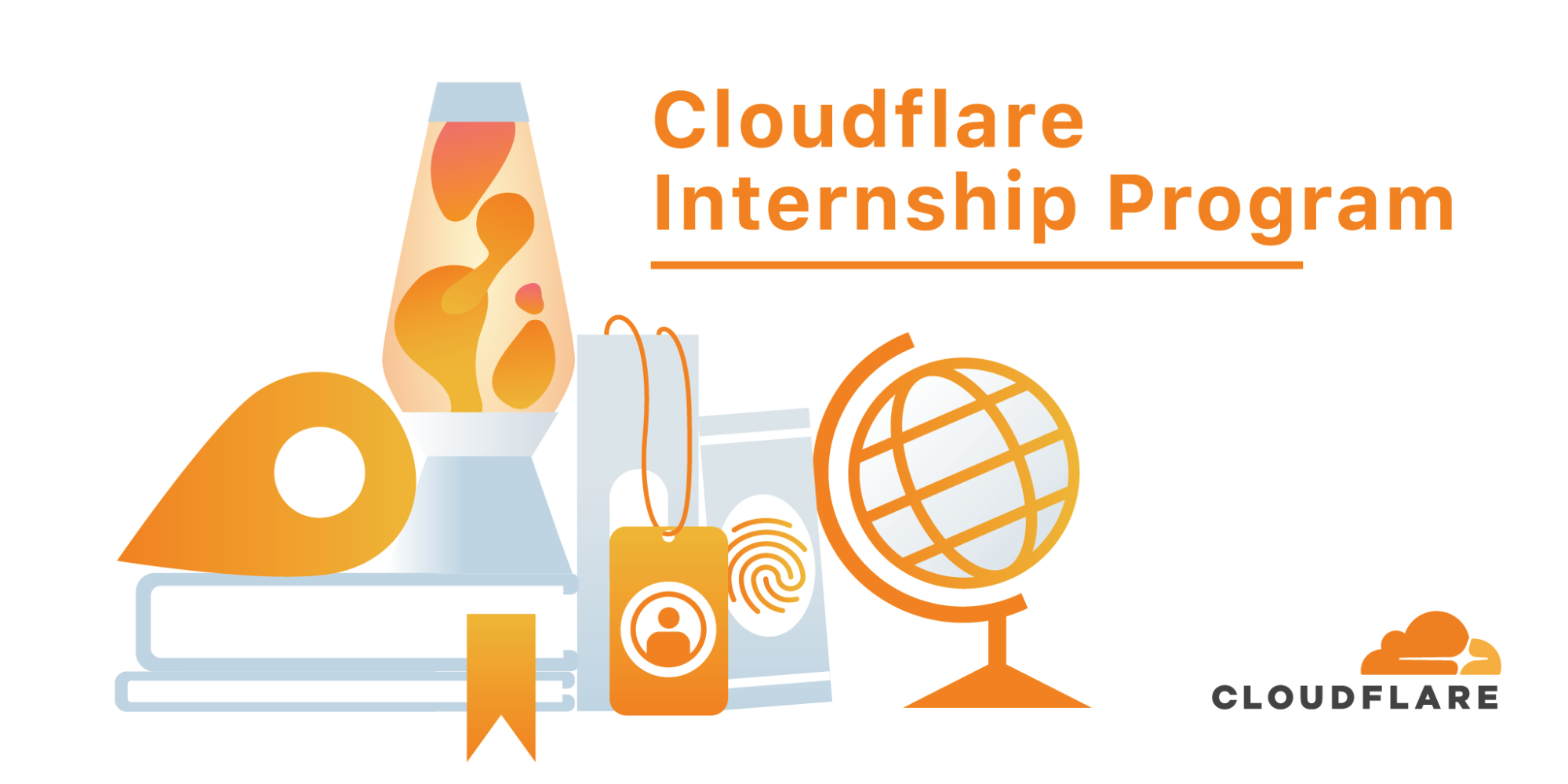
Earlier this month, we announced our plans to relaunch our intern hiring and double our intern class this summer to support more students who may have lost their internships due to COVID-19. You can find that story here. We’ve had interns joining us over the last few summers - students were able to find their way to us by applying to full-time roles and sometimes through Twitter. But, it wasn’t until last summer, in 2019, when we officially had our first official Summer Internship Program. And this year, we are doubling down.
Why do we invest in interns?
We have found interns to be invaluable. Not only do they bring an electrifying new energy over the summer, but they also come with their curiosity to help solve problems, contribute to major projects, and bring refreshing perspectives to the company.
- Ship projects: Our interns are matched with a team and work on real and meaningful projects. They are expected to ramp up, contribute like other members of the team and ship by the end of their internship.
- Hire strong talent: The internship is the “ultimate interview” that allows us to better assess new grad talent. The 12 weeks they spend with Continue reading
Creating a True One-Stop Solution for Companies to Go Global: Announcing a Partnership Between Cloudflare and JD Cloud & AI
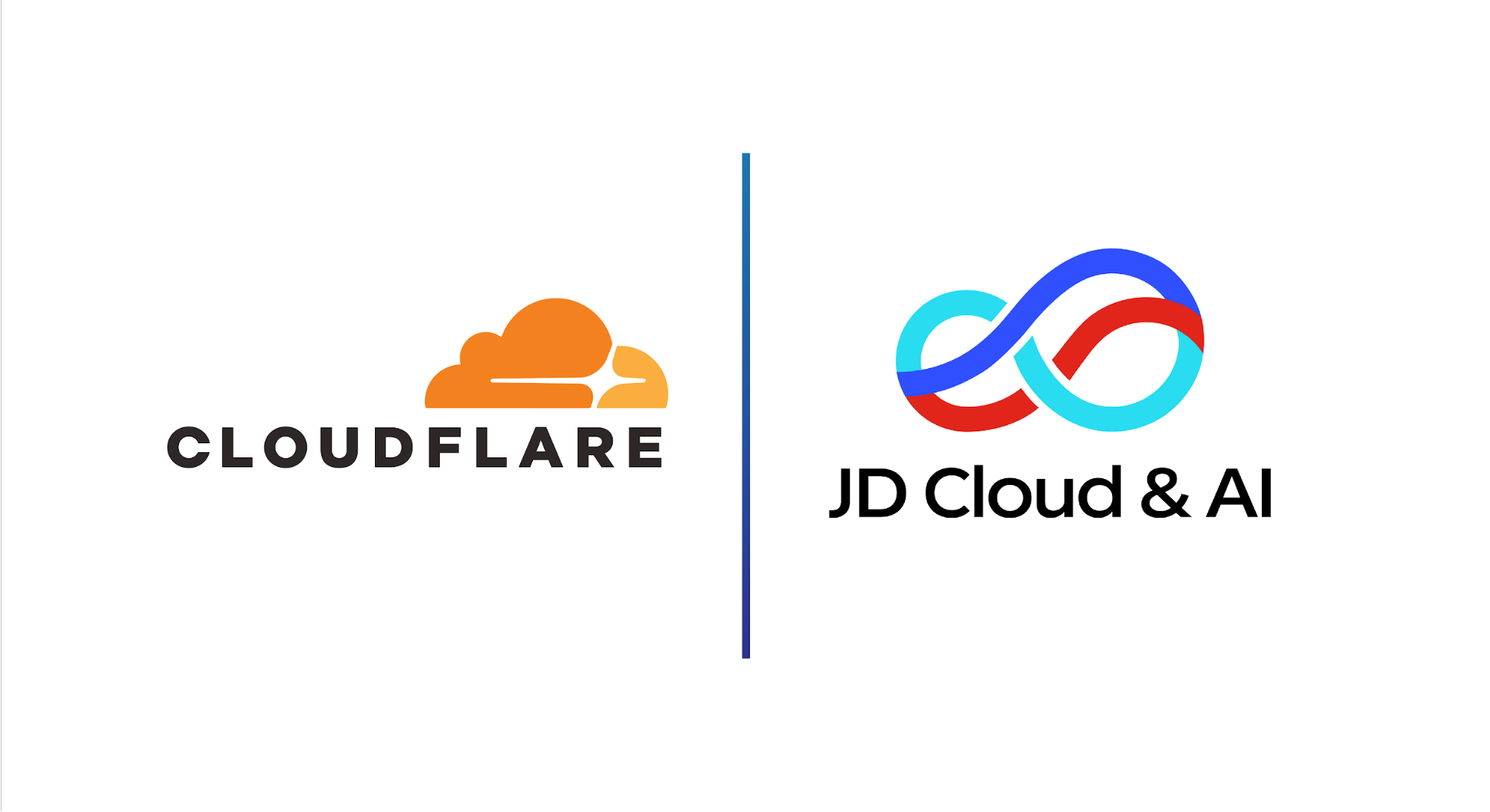
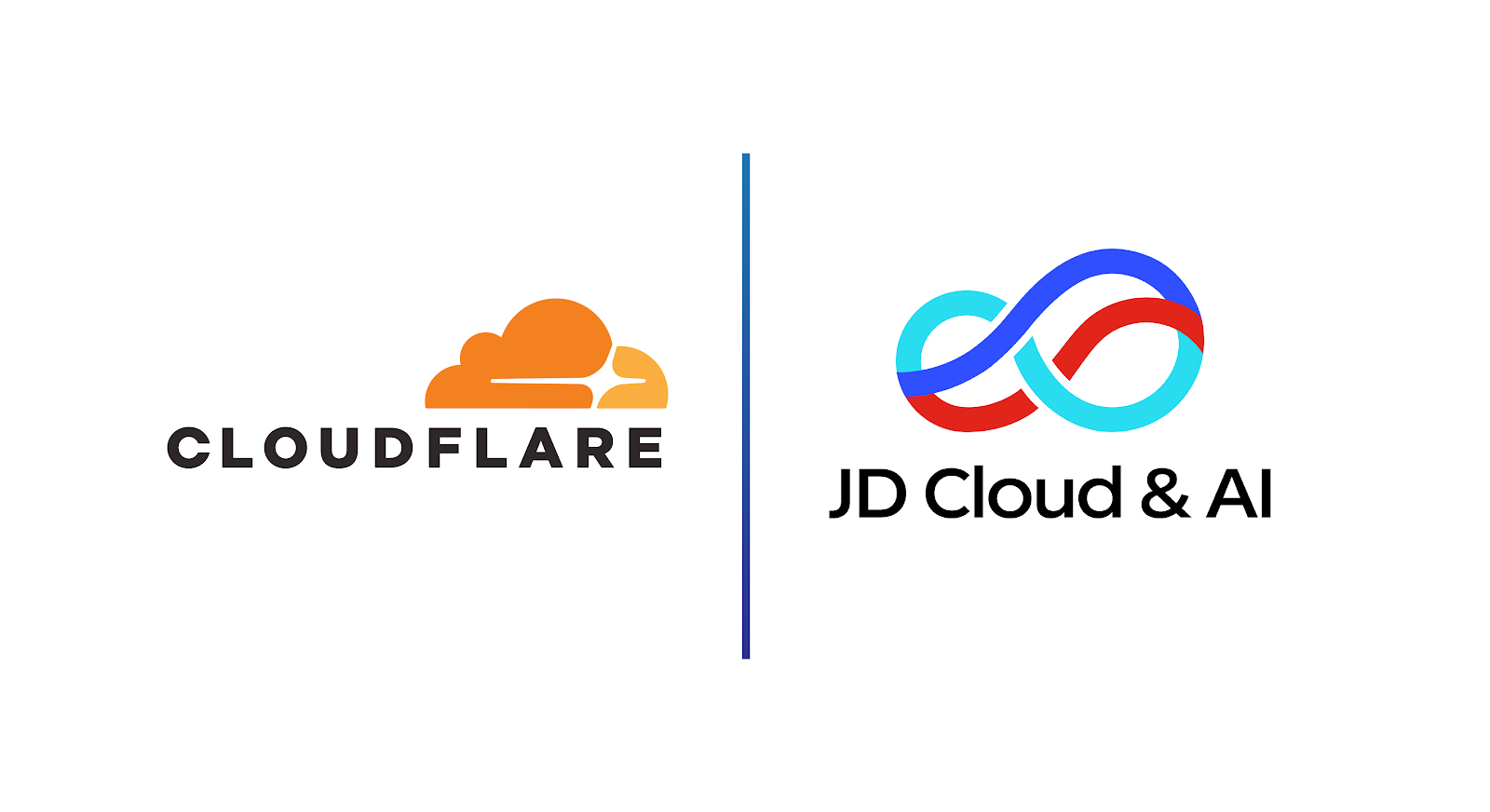
It’s well known that global companies can face challenges doing business in and out of China due to the country’s unique rules, regulations, and norms, not to mention recent political and trade complications. Less well known is that China’s logistical and technical network infrastructure is also quite different from the rest of the world’s. With global Internet traffic up 30% over the past month due to the pandemic, these logistical and technical hurdles are increasing the burden for global businesses at exactly the wrong time. It’s now not unusual for someone based in China to have to wait extended periods and often be unable to access applications hosted elsewhere, or vice-versa, due to the lower performance of international Internet traffic to and from China. This affects global companies with customers, suppliers or employees in China, and Chinese companies who are trying to reach global users.
Our mission is to help build a better Internet, for everyone, everywhere. So, today we’re excited to announce a significant strategic partnership with JD Cloud & AI, the cloud and intelligent technology business unit of Chinese Internet giant JD.com. Through this partnership, we’ll be adding 150 data centers in mainland China, an increase in Continue reading
Releasing kubectl support in Access
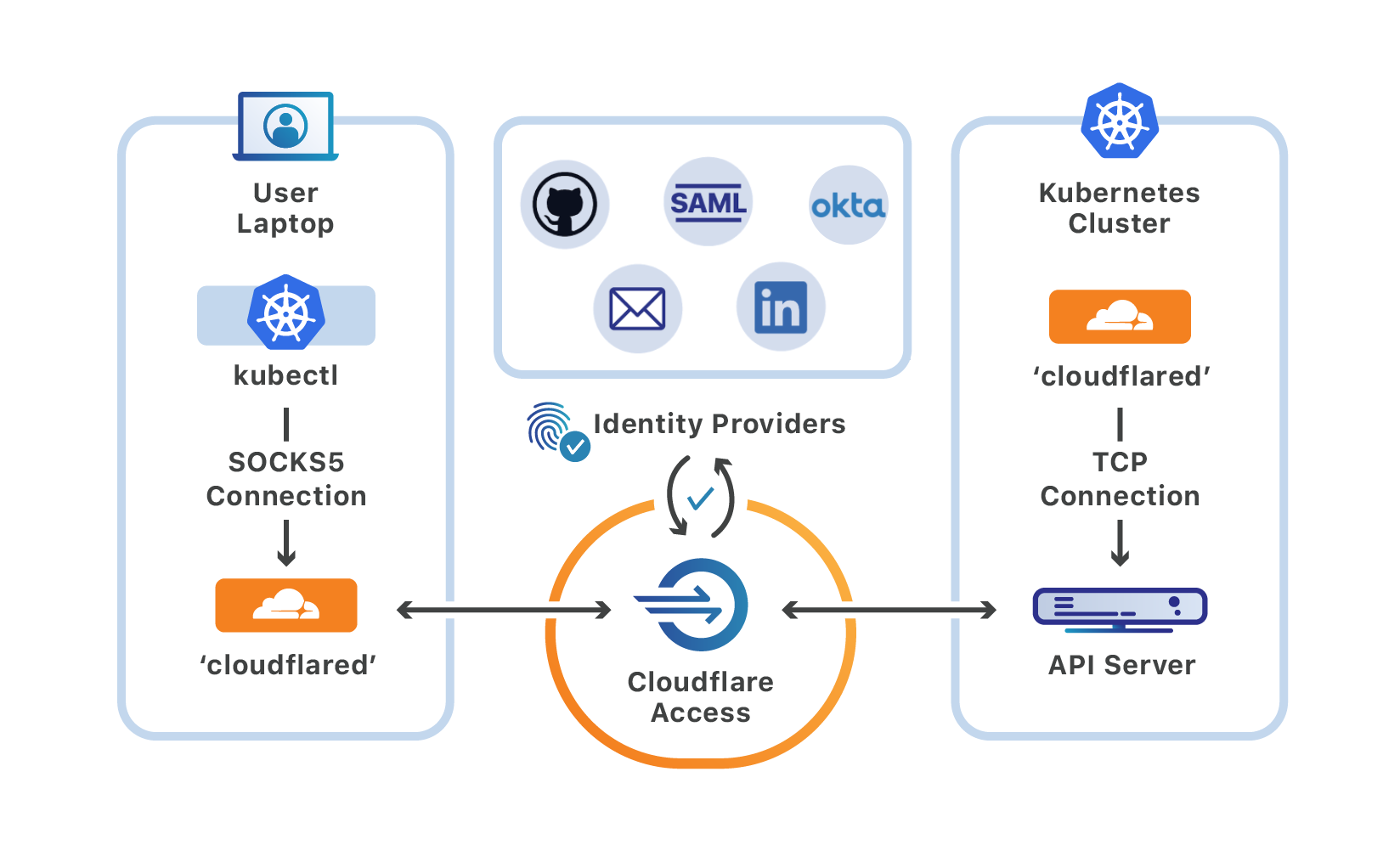
Starting today, you can use Cloudflare Access and Argo Tunnel to securely manage your Kubernetes cluster with the kubectl command-line tool.
We built this to address one of the edge cases that stopped all of Cloudflare, as well as some of our customers, from disabling the VPN. With this workflow, you can add SSO requirements and a zero-trust model to your Kubernetes management in under 30 minutes.
Once deployed, you can migrate to Cloudflare Access for controlling Kubernetes clusters without disrupting your current kubectl workflow, a lesson we learned the hard way from dogfooding here at Cloudflare.
What is kubectl?
A Kubernetes deployment consists of a cluster that contains nodes, which run the containers, as well as a control plane that can be used to manage those nodes. Central to that control plane is the Kubernetes API server, which interacts with components like the scheduler and manager.
kubectl is the Kubernetes command-line tool that developers can use to interact with that API server. Users run kubectl commands to perform actions like starting and stopping the nodes, or modifying other elements of the control plane.
In most deployments, users connect to a VPN that allows them to run commands against that Continue reading